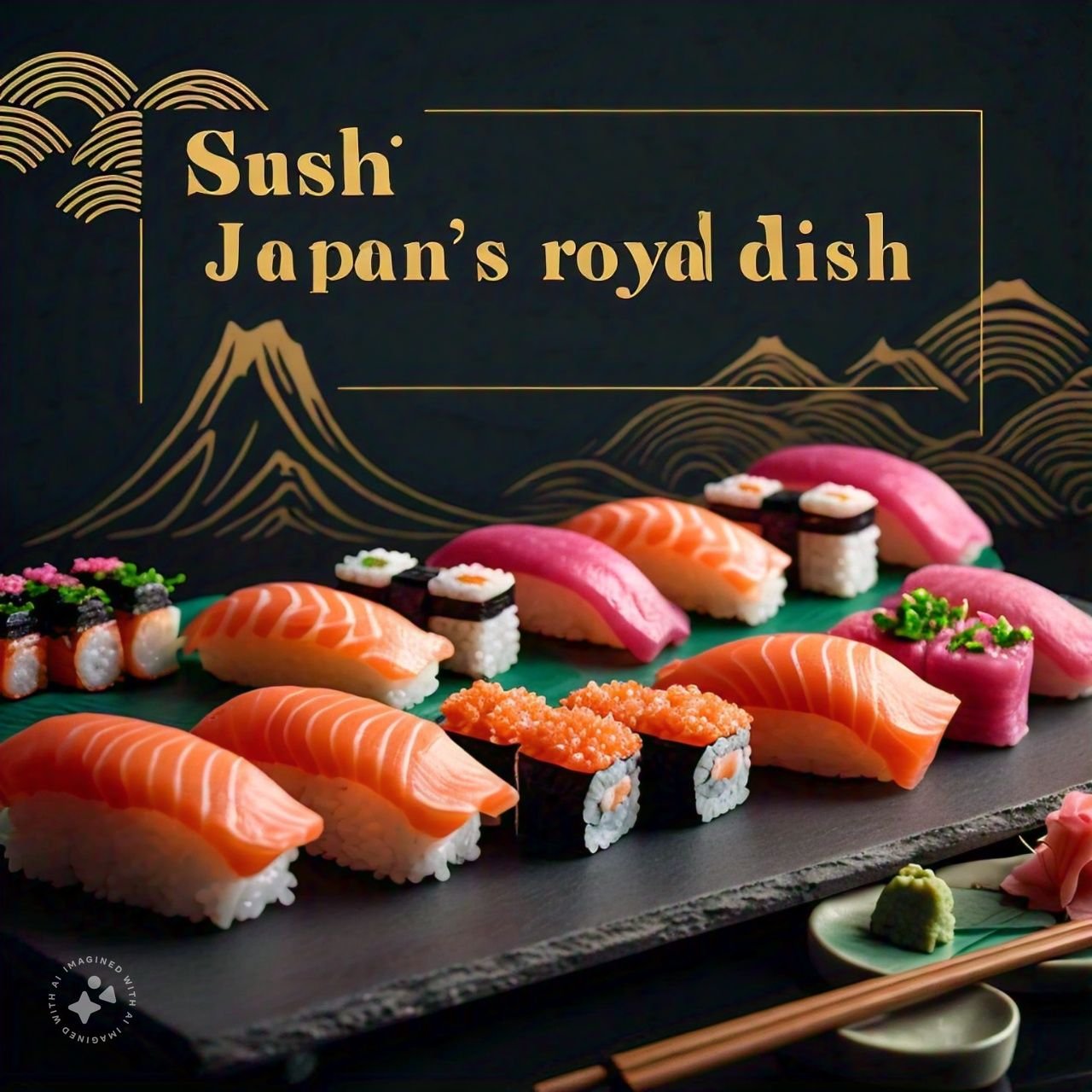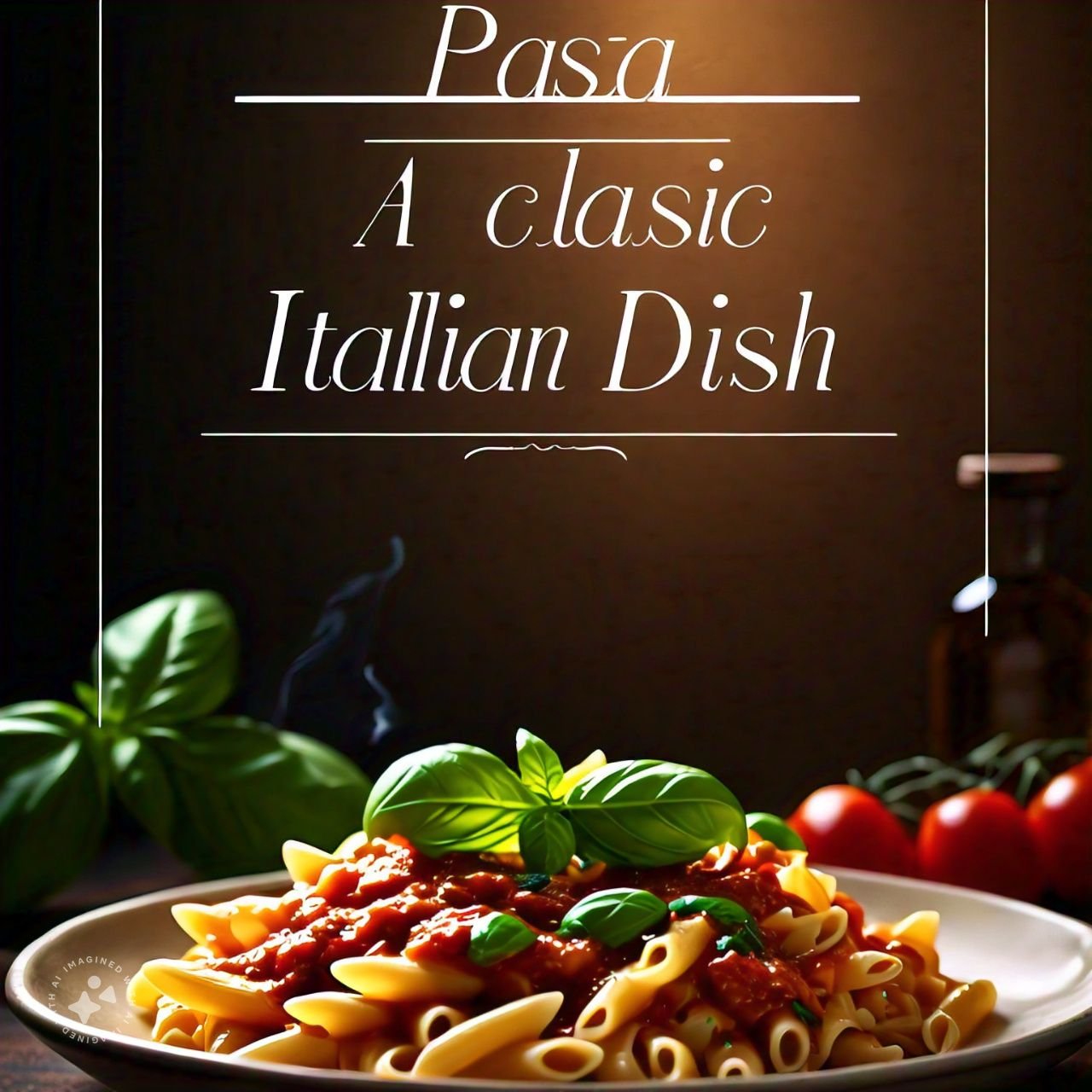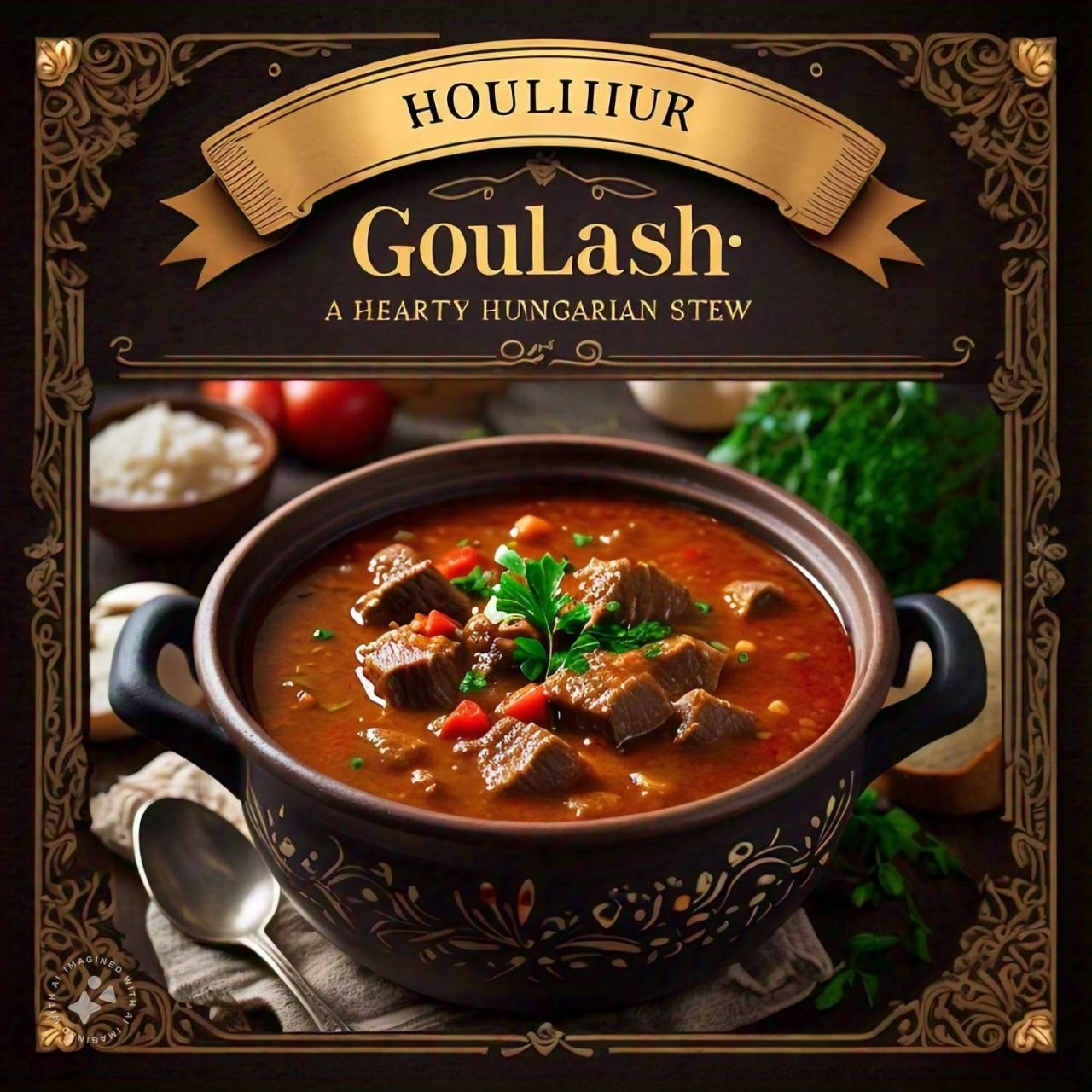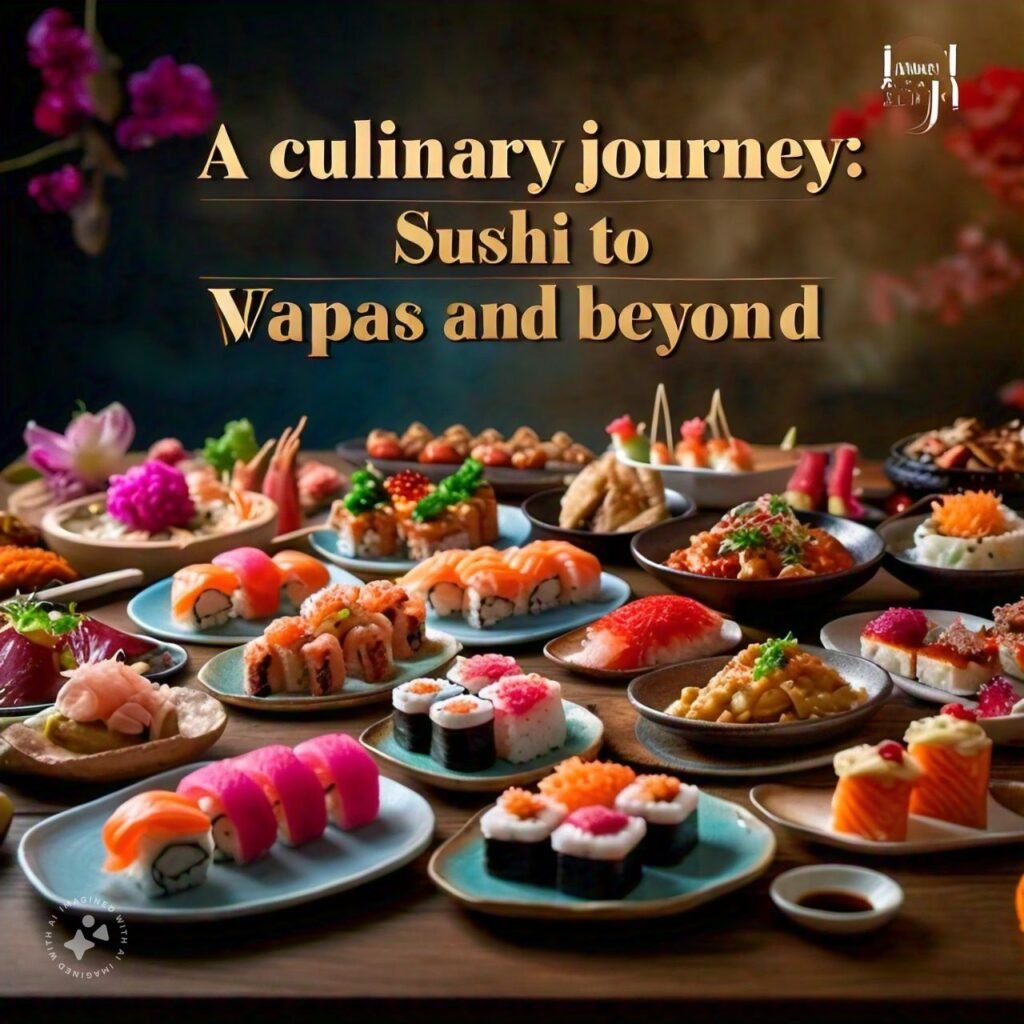Food is a universal language, a rich tapestry woven from the threads of culture, history, and geography. Every dish tells a story, offering a glimpse into the traditions and practices of its people. In this article, we invite you on a global culinary tour that spans continents and cultures, celebrating the diverse flavors that make our world a delectable place. From the exquisite art of sushi in Japan to the vibrant tapas of Spain, let’s explore the unique culinary experiences that define each region.
1. Sushi: Japan’s Royal Dish

Sushi is not just a dish; it’s an experience steeped in history and artistry. Originating in Japan, sushi combines vinegared rice with a variety of ingredients, most commonly fresh fish. Its roots can be traced back to ancient preservation techniques, where fish was fermented with rice to prolong its shelf life.
The Art of Sushi
Today, sushi has evolved into an array of styles, including nigiri (slices of fish atop small mounds of rice), sashimi (thinly sliced raw fish), and maki (rolled sushi wrapped in seaweed). Each type showcases the skill and precision of sushi chefs, who emphasize freshness and presentation. The delicate balance of flavors and textures in sushi reflects the Japanese philosophy of simplicity and elegance in food.
Pairing and Experience
Traditionally, sushi is enjoyed with soy sauce, pickled ginger, and wasabi. The art of pairing sushi with sake (Japanese rice wine) can elevate the dining experience, enhancing the subtle flavors of both the food and the drink. Whether enjoyed at a high-end sushi bar or a casual conveyor belt restaurant, sushi is a quintessential Japanese culinary experience that transcends borders.
2. Dim Sum: Mini Delights of China
Dim sum is a culinary tradition that originated in the Cantonese region of China, symbolizing the joy of sharing food with family and friends. This delightful cuisine encompasses a wide variety of small dishes, including dumplings, buns, and rolls, each bursting with unique flavors and textures.
A Social Affair
Typically enjoyed during brunch, dim sum is often served with tea, creating a social atmosphere where diners can sample multiple dishes. Steamed, fried, or baked, dim sum items can range from delicate shrimp dumplings (har gow) to savory pork buns (char siu bao). The experience is as much about the food as it is about the company, making dim sum a cherished cultural practice.
Global Popularity
As dim sum has gained international popularity, it has adapted to various cultures while retaining its core essence. Many cities around the world now boast dim sum restaurants, offering an array of traditional and innovative dishes that honor this beloved Chinese culinary art.
3. Pad Thai: Spicy Noodles from Thailand
Pad Thai is one of Thailand’s most famous dishes, representing the country’s vibrant street food culture. This stir-fried noodle dish is a harmonious blend of flavors—sweet, sour, and spicy—making it a favorite among locals and tourists alike.
Flavor Profile
At its core, Pad Thai consists of rice noodles tossed in a tangy tamarind sauce, often accompanied by shrimp, chicken, or tofu. The dish is garnished with crushed peanuts, fresh lime, and bean sprouts, adding layers of texture and taste. Every bite delivers a delightful explosion of flavors, showcasing the intricate balance that characterizes Thai cuisine.
Street Food Culture
Street vendors serve Pad Thai across Thailand, offering an authentic experience that reflects the country’s culinary heritage. Eating Pad Thai in a bustling market, surrounded by the sights and sounds of Thai life, is an unforgettable experience that captures the essence of Thailand’s food culture.
4. Tapas: Spain’s Cooking Festival
In Spain, tapas are more than just small plates; they embody the spirit of social dining. These delectable bites can range from olives and cheese to more elaborate dishes like patatas bravas (spicy potatoes) and gambas al ajillo (garlic shrimp).
A Celebration of Sharing
The concept of tapas is rooted in sharing and community. Friends and family gather around a table, sampling various dishes and enjoying each other’s company. This communal dining style creates a lively and festive atmosphere that is an integral part of Spanish culture.
Culinary Variety
Tapas vary by region, with each area offering its own specialties. From the seafood-rich plates of coastal regions to the hearty meat dishes of inland Spain, tapas reflect the country’s diverse culinary landscape. Whether enjoyed in a bustling bar in Barcelona or a quiet tavern in Seville, tapas is a culinary festival that celebrates the joy of food and friendship.
5. Pasta: A Classic Italian Dish

Pasta is a beloved staple in Italian cuisine, with a rich history that stretches back centuries. This versatile ingredient comes in countless shapes and forms, from long strands of spaghetti to short tubes of penne.
A Culinary Canvas
The beauty of pasta lies in its adaptability; it can be paired with a myriad of sauces and ingredients. Classic Italian sauces like marinara, alfredo, and pesto showcase the simplicity and quality of Italian cooking. Each region of Italy boasts its own pasta traditions, reflecting local ingredients and culinary techniques.
An Italian Tradition
Making pasta by hand is a time-honored tradition in Italy, often passed down through generations. From the rolling of the dough to the crafting of intricate shapes, homemade pasta embodies the heart and soul of Italian cuisine. Whether enjoyed in a cozy trattoria or at home, pasta is a dish that unites people around the table.
6. Biryani: A South Asian Flavored Rice Dish
Biryani is a fragrant and flavorful rice dish that has become a beloved staple in South Asian cuisine. Its origins can be traced back to the Persian influence on Indian cooking, resulting in a dish that is both aromatic and richly spiced.
Layers of Flavor
Biryani is traditionally made with basmati rice, marinated meat (such as chicken, lamb, or beef), and a blend of spices, including saffron, cardamom, and cloves. The dish is often cooked in layers, allowing the flavors to meld together beautifully. Each region in South Asia has its own version of biryani, such as Hyderabadi, Lucknowi, and Karachi biryani, each with its unique preparation and taste.
A Festive Dish
Biryani is often served during special occasions and celebrations, making it a dish that brings people together. The rich flavors and aromatic spices create a festive atmosphere, making every gathering memorable.
7. Moussaka: The Layered Joy of Greece
Moussaka is a beloved Greek dish that epitomizes the richness of Mediterranean cuisine. This layered casserole typically features eggplant, minced meat, and a creamy béchamel sauce, creating a comforting and satisfying meal.
Crafting the Layers
The preparation of moussaka involves carefully layering the ingredients, with each component contributing to the overall flavor profile. The eggplant is often grilled or fried, adding depth and texture, while the meat is seasoned with aromatic spices. The béchamel sauce, with its creamy texture, ties everything together.
A Taste of Tradition
Moussaka is a staple in Greek households and restaurants alike, reflecting the country’s culinary heritage. It is often enjoyed during family gatherings, symbolizing the warmth and hospitality that Greek culture is known for.
8. Falafel: A Spicy Middle Eastern Snack
Falafel is a popular street food that has gained international acclaim, known for its crispy texture and vibrant flavor. Made from ground chickpeas, herbs, and spices, falafel is typically shaped into balls or patties and deep-fried to perfection.
A Flavorful Bite
Falafel is often served in pita bread, accompanied by fresh vegetables and sauces like tahini or hummus. This nutritious and delicious snack is not only a staple in Middle Eastern cuisine but has also become a favorite among food enthusiasts worldwide.
Cultural Significance
The popularity of falafel extends beyond its taste; it represents the rich culinary heritage of the Middle East. Enjoying falafel in a bustling market or at a local eatery is an experience that connects diners to the vibrant street food culture of the region.
9. Goulash: A Hearty Hungarian Stew

Hungarian goulash is a comforting and flavorful stew that showcases the rich culinary traditions of Hungary. Made with meat, vegetables, and an abundance of paprika, goulash is a dish that warms the soul.
A Dish of Tradition
Traditionally slow-cooked, goulash allows the flavors to develop and meld together. The dominant taste of paprika gives the dish its signature color and flavor, making it a beloved comfort food during colder months. Goulash is often served with crusty bread or dumplings, completing the hearty meal.
A Symbol of Hospitality
Goulash is often prepared for family gatherings and celebrations, symbolizing Hungarian hospitality and warmth. Sharing a bowl of goulash with loved ones is an experience that embodies the heart of Hungarian culture.
10. Baklava: A Sweet Turkish Treat
Baklava is a sweet pastry that has become a beloved dessert across the Middle East and Mediterranean. Made with layers of flaky pastry, nuts, and honey or syrup, baklava is a treat that tantalizes the taste buds.
A Labor of Love
The preparation of baklava is a meticulous process that involves layering sheets of dough and sprinkling nuts between them. Once baked, the pastry is drenched in a sweet syrup, resulting in a rich and indulgent dessert.
A Cultural Delight
Baklava is often served during special occasions and celebrations, symbolizing generosity and hospitality. Enjoying a piece of baklava with a cup of tea or coffee is a cherished tradition that connects people to the rich culinary heritage of the region.
Conclusion
The world is a vast culinary landscape, rich with flavors, textures, and traditions. From the delicate sushi of Japan to the festive tapas of Spain, each dish tells a story of its origin and the culture it represents. Through this global culinary tour, we have explored the diversity of flavors that make each region unique, showcasing the importance of food in our shared human experience.
Every bite offers a taste of history, culture, and community, reminding us that food is not just sustenance but a celebration of life. As we continue to explore and appreciate the world’s culinary offerings, let us savor the richness and uniqueness that each dish brings to our table. Bon appétit!





